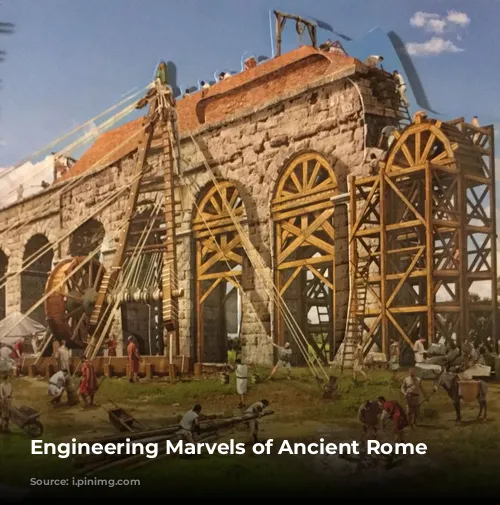The Roman Empire was a testament to human ingenuity. From roads that connected far-flung territories to awe-inspiring structures like the Colosseum, the Romans left an indelible mark on the world. Their engineering feats, often inspired by Greek civilization, continue to influence modern-day architects and engineers.
A Legacy of Roads
Roman roads were the lifeblood of their empire, facilitating trade and transportation across vast distances. Constructed from durable concrete that still stands today, these roadways were designed with meticulous care. Strategic humps were built into the center of the roads, allowing water to flow freely and preventing flooding. These roads were crucial for military campaigns and the expansion of Roman influence. In fact, the Romans meticulously planned and built 29 major highways radiating from the capital city, connecting Rome to the farthest corners of its empire.
The Colosseum: A Symbol of Entertainment
The Colosseum, one of the most iconic Roman structures, served as a monumental entertainment venue. Its massive size, capable of accommodating 50,000 spectators, allowed the Romans to indulge in spectacles like mock battles, gladiator games, and theatrical performances. The Colosseum stands as a testament to Roman ingenuity in structural engineering, particularly in utilizing arches for strength and durability. Though ravaged by natural disasters over time, the Colosseum’s enduring presence speaks to the Romans’ remarkable construction skills.
Aqueducts: A Lifeline of Water
Water was essential to the Romans, and they developed ingenious methods for securing a reliable water supply. Their extensive network of aqueducts, stretching over 500 miles, harnessed the power of gravity to transport fresh water from distant hills to the city. These aqueducts, consisting of slopes, channels, and underground tunnels, ensured that Roman citizens had access to water for drinking, cooking, and bathing. Beyond basic needs, aqueducts even played a crucial role in sanitation and allowed some wealthy households to enjoy the luxury of indoor plumbing.
Bridges: Connecting the Empire
Roman bridges were marvels of engineering, built to withstand the rigors of time and weather. These structures, constructed with durable materials like stone and concrete, employed powerful arches to distribute weight and provide support for impressive lengths. The Trajan bridge, the largest Roman bridge, stretched over 3,700 feet and stood an astounding 62 feet tall. Several Roman bridges, like the Alcántara bridge, still stand today, a testament to the Romans’ ability to create enduring structures.
Roman Architecture: A Timeless Legacy
The Romans weren’t just masters of engineering; they were also pioneers of architecture. Their structures, incorporating iconic elements like arches and domes, showcased their innovative use of space. Arches were prevalent throughout Roman architecture, providing structural support for bridges, aqueducts, and amphitheaters. Domes, on the other hand, allowed for the construction of large ceilings and created spacious, awe-inspiring interiors. These architectural elements could be seen in public spaces like amphitheaters, atriums, and temples, often adorned with elaborate carvings of battle scenes, reflecting the Romans’ military prowess.
The Enduring Influence of Roman Engineering
The Romans’ legacy extends far beyond the physical remains of their structures. Their engineering innovations in roads, aqueducts, bridges, and architecture continue to inspire modern engineers and architects. These innovations have shaped our world, from the roads we travel on to the buildings we inhabit, leaving an enduring imprint on the fabric of civilization.
